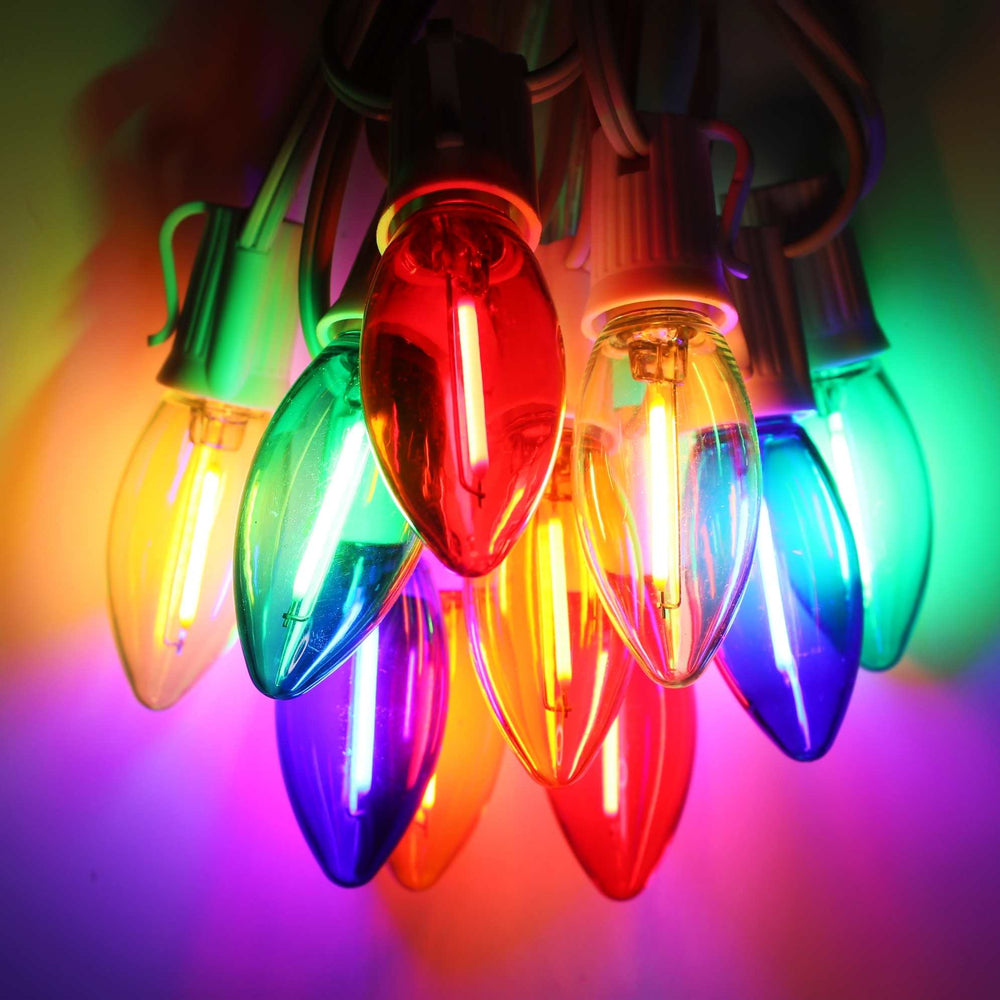

This is a tricky question because the answer depends on what type of lights you are looking at.
String Lights
(with series wiring - ie. mini lights, craft lights and pre-wired LED string lights)
For string lights, it's important to stick with one family of lights in a series because LED and incandescent lights pull vastly different amounts of current. (If you think of electricity as a river, current measures how much water flows.) LEDs only need a slight current, and if you run them in series with a much higher resistance than a traditional string of mini lights, you risk damaging your lights or, worse, starting a fire.
It's a good idea to only run string lights in the same family together in one run. Only LED's in a run or only traditional lights in a run. When it comes to traditional lights, it's best not to run lights of various bulbs together in series but stick to running lights with similar characteristics in single runs.
Socket Wire with Separate Bulbs
(With Parallel electrical connection)
Traditional socket wire with heavy duty wiring is generally wired in parallel. All of the stringer cord that we carry is wired in parallel. This means that the electrical current is delivered to each bulb on the circuit in only the quantity that it needs. (Constant voltage, variable current for those of you who want this in techno-speak.)
Your can see examples of these types of stringers at C7 cords and C9 cords.
Because these cords are wired in parallel, you can actually run traditional incandescent or filament bulbs in the same run as LED bulbs. You could alternate painted blue or opaque bulbs with LED bulbs for different textures in your lighting.
Aside from style considerations, also keep in mind that even though you might use a large number of LED bulbs, the longest run of stringer wire that you can safely operate cannot exceed the maximum length rating of the cord itself. LED bulbs don't carry much current but if 18 AWG wire is run too long, it can act like it's own fuse and you can blow your breaker or worse start an electrical fire.
For 18 AWG wire, we don't suggest any run longer than 250 feet.
Ultimately, if you are running custom lengths of cords together in series, consult with a master electrician to confirm your wiring is safe and within the specifications of your materials.
If you choose to go all incandescent, remember that C7 and C9 bulbs range in wattage from 5 to 10 watts. We suggest that you don't exceed 1000 watts per breaker. Again, consult with a local master electrician.
Pin and save for later!



